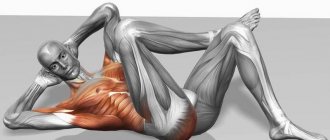During communication, we express our attitude towards the interlocutor in different ways. Words and eloquent glances help us understand how our partner feels. Sometimes touches speak more than hundreds of words. What is tactile contact, what is its role in building relationships with others: family members, friends and partners.
What is the function of touch, what are they, what processes are involved in tactile contact, how is tactile communication between a man and a woman expressed, can touch revive passion or promote flirting, and when should you keep your distance - read our material.
What is tactile contact and why is it so important?
Tactile contact, or touch, plays a big role in human communication. In the work environment, tactile contact is often limited to handshakes. Family, friendly or loving hugs and touches are another matter. By touching or hugging a person, we show that we care about him.
There are several types of touches:
- polite;
- workers;
- friendly;
- love;
- sexy.
Tactile contact is, first of all, a way to show a person that you trust him and treat him warmly. If a person allows himself to be touched, it means he trusts you.
Contact between partners
Nonverbal communication is a powerful tool with which true intentions and relationships are understood without words. Managers need to be careful because subordinates may misinterpret their gestures. For example, one person will regard a manager’s hand on his shoulder as support and care, while another will consider it sexual harassment. In business relationships, the number of tactile contacts is limited. Partners keep their distance. Shaking hands and patting on the shoulder during a friendly greeting is allowed.
Chemical processes during tactile contact
Humans' love for hugs originates from our distant relatives - monkeys. All primates practice grooming, or grooming: they clean each other's fur. In addition to the hygienic function, tactile sensations form attachment between members of the pack. Indirectly, this tradition was passed on to us.
During tactile contact with a pleasant person, not only the psychological component is involved, but also complex chemical processes are activated. When you touch another person's skin, the hormone oxytocin is released. It makes us feel joy, tenderness and security
The more you hug and kiss your partner, the closer you will become to each other.
Brain trick
After you have learned what these are tactile sensations, it is worth understanding what is hidden under the term “brain deception”.
Because tactile sensors collect so much information, the brain can be conditioned to misinterpret the information. For example, a trick called the Aristotle illusion requires a person to cross their fingers and touch a small round object. The brain will interpret one object as two.
The role of touch in different cultures
Historically, different countries have developed different attitudes towards tactile contacts. Thus, Asians, residents of Northern Europe and North America do not accept tactile contacts with unfamiliar people. Even in everyday life, they minimize touching family members. The only exception, perhaps, is the intimate sphere.
Some peoples traditionally hug and kiss. Southern Europeans and Latin Americans perceive tactile contact well. Hot southern blood encourages them to rush into the arms of even unfamiliar people.
Types of receptors
There are many types of receptors in the somatosensory pathway, including:
- Peripheral tactile mechanoreceptors. Their activation is the initial stage of stimulation recognition. The effect on the skin is converted into an electrical signal in the peripheral process of the primary afferent neuron. This creates a depolarization across the neuron's membrane, which results in an action potential entering the cerebellum of the brain to initiate the action type.
- Merkel discs are located on the upper part of the dermis. Slow adapting receptors. They are found on the fingertips and also on the eyelids.
- Meissner Corpuscles. Also located in the upper part of the dermis. Found on hairless skin, including lips, as well as eyelids. These are rapidly adapting receptors.
- Thermoreceptors are capable of detecting heat. There are actually two types of these receptors in mammals. One that can identify heat above body temperature and vice versa!
Once we have learned what it is, tactile sensations and how the brain receives and converts signals from skin receptors, everyone will be able to determine how developed they are in him.
Tactile contact gives a feeling of security
All children seek protection in their parents' arms.
When we hug someone strong, we feel protected, and this feeling stays with us for the rest of our lives.
Women especially need a big hug. In the age of emancipation, strong and independent women so want to come home and take refuge in the strong arms of their own man. This is why women often fall asleep on a man’s chest and love to be wrapped in arms.
It has been scientifically proven that married people live longer than single people. Spouses who sleep together into old age prolong their lives. Sleeping in a hug promotes relaxation and sound sleep.
Somatosensory system
After you have become familiar with tactile sensations and what they are, you should talk about the somatosensory system. It includes several types of feelings from the body. Namely: light, touch, pain, pressure, temperature and joint/muscle sensation.
Each of these is divided into three categories: discriminative touch, pain and temperature, and proprioception. Discriminatory contact includes touch, pressure, ability to sense vibrations, etc. Pain and temperature include: the perception of pain (amount, severity, etc.) and temperature differences. These same categories of sensations also include itching and tickling.
Proprioception includes receptors for everything that happens below the surface of the skin. This combines the sensations of different muscles, joints and tendons. Each of these three categories has its own types of pathways and receptors. The first are directed to the cerebellum in the brain. This part of the brain monitors what the muscles are doing at all times, so any potential damage to this area can greatly affect the senses.
How is tactile communication between a man and a woman expressed?
Mutual touching is the main non-verbal way of communication between partners. If people begin to touch each other frequently, this serves as a signal of the beginning of affection between them, they are ready to move on to a closer relationship.
Tactile communication can manifest itself in different ways:
- Touch as support. Spouses may shake hands, hug each other's shoulders, or cuddle together to show support and participation.
- Touching as a sign of approval.
- Sexual touching designed to show that the partner is committed to physical intimacy.
- Touching as a sign of affection. This is how a person shows his partner how important he is to him.
The desire to frequently have tactile contact with a partner serves as a signal that it will be good for people to be in the same territory.
Differences in reactions to touch between men and women
There are more nerve endings concentrated on the body of women than on the body of men. Therefore, women perceive touch more positively.
American psychologists conducted studies that confirmed this fact. At one library, employees were asked to touch patrons while returning books. The girls felt sympathy for the workers who touched their hands, but the men, on the contrary, were more wary of the librarians.
To some extent, this explains the fact that a man allows himself to be touched only by a girl for whom he feels sincere sympathy. Tactile contact with an unpleasant person will only cause him to be rejected.
Definition of the concept
The transfer of information occurs using touch. This is a specific way of communicating through direct physical contact with another person. Tactile data comes to the brain from sensory receptors located in the muscles and joints. In this way, a person receives information about the position of the body in space, the outside world.
Tactile communication is one of the ways of communication. This is visual or non-verbal contact. With the help of tactile communication, a person attracts attention, establishes a connection, expresses an attitude towards a partner, and demonstrates negative emotions. Tactile communication and the norms that are associated with it depend on the culture of the area.
In terms of its meaning, touch can be ritual, playful, sexual, friendly, as well as intentional and accidental. Tactile communication complements visual and verbal communication.
The language of touch
Regardless of gender, different people respond to touch with varying degrees of sensitivity. If your partner speaks the “language of touch,” don’t skimp on tactile contact. Put your head on your shoulder while watching a movie, touch it with your hand when passing by, hold hands on the street.
An interesting fact is that at the beginning of a relationship, most couples walk on the street holding hands. When a man and woman have been in a relationship for a long time, they stop touching each other in public. This is one of the alarm bells. The lack of need for touching indicates that partners are moving away from each other.
What to do? To begin, hold hands again. The mutual touch of spouses calms the nervous system and normalizes blood pressure. Hugs, pats and light touches are not only pleasant, but also useful.
Tactile contact as a way to revive passion
It happens that over time, spouses grow cold towards each other. Touching can raise a new wave of passion between partners.
In order to awaken your partner's sensuality, offer him a game. Touch different points on his/her body with your fingertips and ask them to say which touches bring more pleasure. Such entertainment will almost certainly end in a stormy night.
A great way to spice up your relationship is to learn massage techniques. To do this, it is not at all necessary to attend special courses. You can find many training videos on the Internet. There are so many sensitive points on the human body that studying them will be a very exciting activity and will definitely please your partner.
Touching while flirting
When a man tries to charm a girl, he almost always tries to touch her. A light touch on the shoulder when he puts a coat on a girl, almost a hug when he helps her climb high steps, a touch on the cheek to shake off a crumb - all these are attempts to achieve closer contact with the girl he likes. The next level of tactile contact is hugs and kisses.
Even if a man does not touch you, you can also understand from his gestures that he really likes you or wants you. Thus, excited men often cross their legs, hide their hands in their trouser pockets, or hold on to their belt.
Wanting to attract the attention of the man she likes, the girl seems to invite him to tactile contact. First of all, body demonstration is used for this. We are talking about an open neck, a short skirt and, of course, a neckline.
According to surveys, men often name women's hair, neck and hands as objects of desire. They want to touch these body parts. It is not surprising that when flirting, girls most often touch their hair, twirl an earring in their ear or a ring on their finger. So she invites the man to touch her.
Pseudounipolar bipolar neurons
Within each somatosensory pathway, there are three types of neurons: pseudounipolar (associative), secondary afferents, and tertiary afferents. Some of them allow a person to react more slowly to stimuli, others to be more receptive. For example, scientists have calculated that the speed of transmission of nervous behavior (impulse) can reach 90 m/sec.
Skin sensitivity differs in different parts of the body. For example, on the thigh or shoulder it is lower (the number of receptors is 1 mg/mm2), while on the tip of the finger there are 2 times more. Adaptation of the skin also varies due to these neurons; it can be long-term (for pain) or almost instantaneous.
An example of the rapidly adapting tactile sense used is putting on clothing. At first you will feel it on you, but after a while you will forget that you are wearing it. The brain's focus is not on the sensation of the clothes on your body, but if you were to concentrate on that feeling, you could instantly feel the contact between your skin and the things you are wearing.
Internet and tactile hunger
In the age of modern technology, more and more people suffer from such a mental disorder as tactile hunger. It manifests itself in a persistent feeling of loneliness and emptiness. Previously, tactile hunger was experienced mainly by single pensioners, but now this problem occurs even among married people and very young people.
With the advent of gadgets, we spend less and less time together in the full sense of the word. No one is surprised by the situation when a couple in the same apartment never touches each other during the entire evening, because everyone has their own life in a smartphone.
Satisfying the need for tenderness and affection is the same necessity as satisfying thirst and hunger. In Australia, this problem became so acute that the American psychologist Harry Harlow founded the Free Hugs movement, which spread to several other countries. Volunteers offer people hugs to reduce stress and anxiety.
How to tell if you're touch-starved
Tactile hunger is easy to confuse with depression - often people don’t even realize that they are experiencing it. There is no definitive way to determine a lack of touch. In the most general terms, it is indicated by Sharkey L. What Does It Mean to Be Touch Starved? Healthline feeling extremely lonely or unattached.
Symptoms of tactile hunger can be combined with the following manifestations:
- feeling depressed;
- stress and anxiety;
- dissatisfaction in relationships;
- sleep problems;
- a tendency to act rashly.
Often people who are touch starved try Sharkey L. What Does It Mean to Be Touch Starved? Healthline imitate them: lie in a hot bath for a long time, wrap yourself in blankets and hug a pillow, and show excessive affection to animals.
Relationships between spouses
The interaction between husband and wife is a special moment that causes many different debates. Family conflicts are the most powerful. It is believed that it is in relationships with the most dear people that we learn important life lessons, without which our personality would not be fully developed. After all, no one can become happy alone. The participation of a partner and the presence of a deep relationship with him are always required. And here you can’t do without tactile contact.
The spouses know each other like no one else. It's not just about individual character, manners, habits. Each of us has our own weaknesses and ailments, and then being close to a loved one can affect our condition and attitude.
What to do if the client turns out to be a kinesthetic person
When a representative of a particular field has to deal with a kinesthetic client, he needs to use the following algorithm:
- When establishing contact with a tactilely oriented client, a person needs to maintain an open posture and demonstrate location. A sales consultant, for example, can stand next to a potential buyer, and an office employee, demonstrating interest in solving the client’s problem, should lean forward slightly.
- In the process of clarifying the client’s request, the specialist must use non-verbal body signals. If the client suddenly becomes silent, you need to bring him back to reality with the help of an unobtrusive touch.
- To motivate a potential buyer, the seller must provide him with the opportunity to touch the product and check the strength of the material using sensors.










